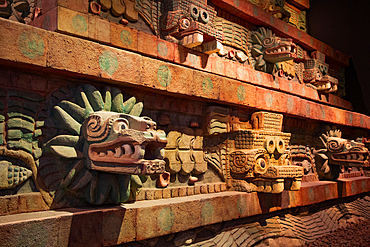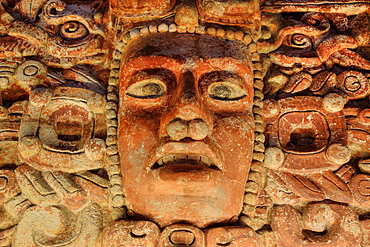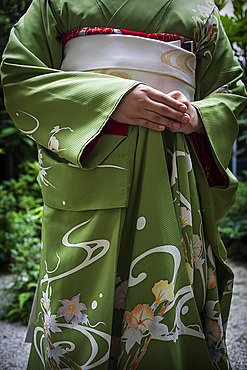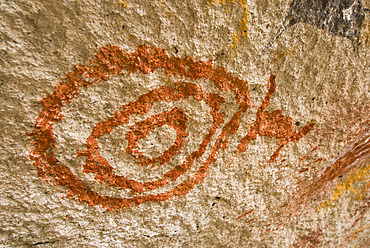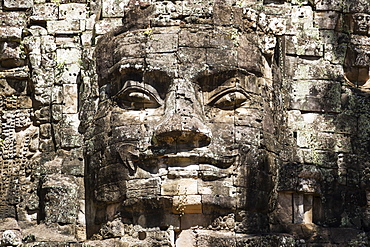Recent searches
Loading...
1384-280 - Reproduction facade of Hochob temple, Chenes culture architecture, National Museum of Anthropology, Mexico City, Mexico
1384-143 - Fountain in courtyard inside the National Anthropology Museum, Museo Nacional de Antropología, Mexico City, Mexico
1384-141 - Exterior of the National Anthropology Museum, Museo Nacional de Antropología, Mexico City, Mexico
1384-142 - Exterior of the National Anthropology Museum, Museo Nacional de Antropología, Mexico City, Mexico
1384-116 - Palacio Canton palace anthropology museum, Merida, Yucatan State, Mexico
1384-112 - Palacio Canton palace anthropology museum, Merida, Yucatan State, Mexico
801-3804 - Quetzalcoatl Heads, Temple of Quetzalcoatl, (reproduction), National Museum of Anthropology, Mexico City, Mexico
801-3803 - Mural Fragments (650-950 AD), from Cacaxtla, Puebla, National Museum of Anthropology, Mexico City, Mexico
801-3801 - Urn (100 BC - 200 AD), from Tomb 77, Monte Alban, National Museum of Anthropology, Mexico City, Mexico
801-3802 - Mural Fragments (650-950 AD), from Cacaxtla, Puebla, National Museum of Anthropology, Mexico City, Mexico
801-3800 - Mural fro Tomb 105 (Reproduction), 250-500 AD, from Monte Alban, National Museum of Anthropology, Mexico City, Mexico
801-3798 - Olmec Colossal Head, 1,200-600 BC, from San Lorenzo, Veracruz, National Museum of Anthropology, Mexico City, Mexico
801-3799 - Olmec Colossal Head, 1,200-600 BC, from San Lorenzo, Veracruz, National Museum of Anthropology, Mexico City, Mexico
801-3797 - Goddess of Fertility (foreground), 200-900 AD, from Veracruz Area, National Museum of Anthropology, Mexico City, Mexico
801-3795 - Lintel 48 (600-800 AD), from Yaxchilan, Chiapas, National Museum of Anthropology, Mexico City, Mexico
801-3796 - Dios del Agua, (foreground, right), 900-1550 AD, from Puebla Area, National Museum of Anthropology, Mexico City, Mexico
801-3794 - Stela 51 (731 AD), from Calakmul, National Museum of Anthropology, Mexico City, Mexico
801-3792 - El Frisco de Placeres, (400-600 AD), from Los Placersos, Campeche, National Museum of Anthropology, Mexico City, Mexico
801-3793 - El Frisco de Placeres, (400-600 AD), from Los Placersos, Campeche, National Museum of Anthropology, Mexico City, Mexico
801-3791 - Atlantes Figures (1000-1250 AD), from Chichen Itaza, Yucatan, National Museum of Anthropology, Mexico City, Mexico
801-3790 - Atlantes Figures (1000-1250 AD), from Chichen Itaza, Yucatan, National Museum of Anthropology, Mexico City, Mexico
801-3789 - Ceramic Figure (200-600 AD), from Tambas de Tiro, National Museum of Anthropology, Mexico City, Mexico
1350-6180 - Cueva de las Manos del Rio Pinturas, Cave of the Hands, Patagonia, Province of Santa Cruz, Argentina
1350-6011 - Fireworks at Avinguda Reina Maria Cristina during La Merce Festiva, Barcelona. Catalonia. Spain
1350-6047 - `Trabucaires´ (men armed with blunderbuss) at Bisbe street during La Merce Festival. Barcelona. Catalonia. Spain
1350-6150 - Cueva de las Manos del Rio Pinturas, Cave of the Hands, Patagonia, Province of Santa Cruz, Argentina
1350-6242 - Fukunae,'maiko' (geisha apprentice)working in a tea house.Geisha's distric of Gion.Kyoto. Kansai, Japan.
1350-6235 - Geishas and 'maikos' (geisha apprentice) in dance class. Geisha school(Kaburenjo) of Miyagawacho.Kyoto.Kansai, Japan.
1350-6213 - Cueva de las Manos del Rio Pinturas, Cave of the Hands, Patagonia, Province of Santa Cruz, Argentina
1350-6169 - Cueva de las Manos del Rio Pinturas, Cave of the Hands, Patagonia, Province of Santa Cruz, Argentina
1350-6249 - Fukuyu,geisha and Fukukimi,'maiko' (geisha apprentice) workimg in Miyaki tea house (o-chaia).Geisha's distric of Miyagawacho.Kyoto. Kansai, Japan.
1350-6165 - Cueva de las Manos del Rio Pinturas, Cave of the Hands, Patagonia, Province of Santa Cruz, Argentina
1350-6239 - Fukuyu,geisha and Fukukimi,'maiko' (geisha apprentice)in taxi going to work.Geisha's distric of Miyagawacho.Kyoto. Kansai, Japan.
1350-6149 - Cueva de las Manos del Rio Pinturas, Cave of the Hands, Patagonia, Province of Santa Cruz, Argentina
1350-6253 - Detail of 'maiko' (geisha apprentice) from Ishihatsu okiya (house of geishas).Geisha's distric of Miyagawacho.Kyoto. Kansai, Japan.
1350-6232 - 'maiko' (geisha apprentice) in dance class. Geisha school (kaburenjo) of Miyagawacho.Kyoto.Kansai, Japan.
1350-6245 - Detail of 'maiko' (geisha apprentice) from Ishihatsu okiya (house of geishas).Geisha's distric of Miyagawacho.Kyoto. Kansai, Japan.
1350-6183 - Cueva de las Manos del Rio Pinturas, Cave of the Hands, Patagonia, Province of Santa Cruz, Argentina
1350-6236 - Geishas and 'maikos' (geisha apprentice) in dance class. Geisha school(Kaburenjo) of Miyagawacho.Kyoto.Kansai, Japan.
1350-6153 - Cueva de las Manos del Rio Pinturas, Cave of the Hands, Patagonia, Province of Santa Cruz, Argentina
1350-6142 - Cueva de las Manos del Rio Pinturas, Cave of the Hands, Patagonia, Province of Santa Cruz, Argentina
1350-6233 - woman inviting passersby to enter into her restaurant. Street scene in Hanamikoji dori street.Geisha's distric of Gion.Kyoto. Kansai, Japan.
1350-6238 - Geishas and 'maikos' (geisha apprentice) in dance class. Geisha school(Kaburenjo) of Miyagawacho.Kyoto.Kansai, Japan.
1350-6057 - Fireworks at Plaza de Espav±a during La Merce Festiva, Barcelona. Catalonia. Spain
1350-6243 - Show of Maikos,(geisha apprentices)they interpret Kyomai, is a Kyoto dance,at Gion Kobu Kaburenjo, geisha's distric of Gion, ,Kyoto. Kansai, Japan.
1350-6250 - Geisha and 'maiko' (geisha apprentice) in Shijo dori street.geisha's distric of Gion, ,Kyoto. Kansai, Japan.
1350-6248 - Fukuyu,geisha and Fukukimi,'maiko' (geisha apprentice)in taxi going to work.They say goodbye at Oka san. Geisha's distric of Miyagawacho.Kyoto. Kansai, Japan.
1350-6241 - Fukuyu,geisha and Fukukimi,'maiko' (geisha apprentice). from Ishihatsu okiya (geisha house).Geisha's distric of Miyagawacho.Kyoto. Kansai, Japan.
1350-6234 - Oka san says goodbye to clients.Taxi in Hanamikoji dori street.Geisha's distric of Gion.Kyoto. Kansai, Japan.
1350-6247 - Fukuyu,geisha and Fukukimi,'maiko' (geisha apprentice) workimg in Miyaki tea house (o-chaia).Geisha's distric of Miyagawacho.Kyoto. Kansai, Japan.
1350-6246 - Okobo (tall wooden shoes).Detail of 'maiko' (geisha apprentice) from Ishihatsu tea house (o-chaia).Geisha's distric of Miyagawacho.Kyoto. Kansai, Japan.
1350-6194 - Cueva de las Manos del Rio Pinturas, Cave of the Hands, Patagonia, Province of Santa Cruz, Argentina
1350-6231 - Fukukimi,'maiko' (geisha apprentice) from Ishihatsu okiya (house of geishas).Geisha's distric of Miyagawacho.Kyoto. Kansai, Japan.
1350-6244 - Geishas and 'maikos' (geisha apprentice) in dance class. Geisha school(Kaburenjo) of Miyagawacho.Kyoto.Kansai, Japan.
1350-1057 - Street scene in Hanamikoji dori street.Geisha's distric of Gion.Kyoto. Kansai, Japan.
1350-2073 - New Ireland Malagan funerary statue in at the Metropolitan Museum of Art museum, New York, USA. New Ireland is part of the Bismarck Archipelago, situated north of New Guinea, and has an estimated population of 100,000. The Dutch first encountered the island in 1616, and today New Ireland is a province of Papua New Guinea. Nineteen different languages are spoken on the island, and it is divided by a chain of mountains into three distinct regions: northern, central, and southeastern. The art of New Ireland traditionally centered on mortuary ceremonies and feasts to honor the dead. In northern New Ireland, the name given to these elaborate ceremonies is malagan, which is also the term used for the carved and painted sculptures associated with the ceremonies.
1350-1041 - Girls dressed in kimono,in Pontocho, a traditional Japanese night-time entertainment area. Kyoto. Japan
1350-1059 - Women wearing kimono.Street scene in Hanamikoji dori street.Geisha's distric of Gion.Kyoto. Kansai, Japan.
1350-1058 - woman inviting passersby to enter into her restaurant.
1116-48867 - Library in Gopura II, Preah Vihear Temple, Preah Vihear, Cambodia
1116-48890 - Face tower of the Bayon, Angkor Thom, Siem Reap, Cambodia
1116-48879 - Prasat Chrey (Structure N18) engulfed by the roots of a fig tree in Prasat Sambor, the North Group, Sambor Prei Kuk, Kompong Thom, Cambodia
1116-48897 - Statue of a Dvarapala gate guardian, Banteay Srei, Angkor, Siem Reap, Cambodia
1116-48882 - Towers of the central block of Angkor Wat, as seen from the second level, Siem Reap, Cambodia
1116-48865 - Courtyard in Gopura II, Preah Vihear Temple, Preah Vihear, Cambodia
1116-48876 - Lion sculptures at the entrance of C1 Tower, the Central Sanctuary or Prasat Boram in Prasat Tao, the Central Group, Sambor Prei Kuk, Kompong Thom, Cambodia
1116-48866 - Library in Gopura II, Preah Vihear Temple, Preah Vihear, Cambodia
1116-48884 - West Gallery of the main temple complex of Angkor Wat, Siem Reap, Cambodia
1116-48893 - Bas-relief battle scene between the Khmer and Cham armies with Elephants on the Eastern gallery of the Bayon, Angkor Thom, Siem Reap, Cambodia
1116-48883 - Monkey atop the ruins, Angkor Wat, Siem Reap, Cambodia
1116-48896 - Sculptures of Hanuman, Banteay Srei, Angkor, Siem Reap, Cambodia
1116-48878 - Tower in Prasat Yeah Puon, the South Group, Sambor Prei Kuk, Kompong Thom, Cambodia
1116-48889 - Stone figures on the causeway to the Victory Gate tower (Gopuram), Angkor Thom, Siem Reap, Cambodia
1116-48863 - Ruins of the Main Sanctuary, as seen from West of Gopura I, Preah Vihear Temple, Preah Vihear, Cambodia
1116-48872 - Gopura IV, Preah Vihear Temple, Preah Vihear, Cambodia
1116-48868 - Guard lion sculpture at the entrance of Gopura II, Preah Vihear Temple, Preah Vihear, Cambodia
1116-48887 - Face detail of the Victory Gate tower (Gopuram), Angkor Thom, Siem Reap, Cambodia
1116-48885 - Victory Gate, Angkor Thom, Siem Reap, Cambodia
1116-48869 - Gopura III, Preah Vihear Temple, Preah Vihear, Cambodia
1116-48877 - Buddhist shrine in the interior of a tower in Prasat Yeah Puon, the South Group, Sambor Prei Kuk, Kompong Thom, Cambodia
1116-48881 - Aerial view of Angkor Wat, as seen from a hot air balloon, Siem Reap, Cambodia
1116-48888 - Face detail of the Victory Gate tower (Gopuram), Angkor Thom, Siem Reap, Cambodia
1116-48894 - Stone figures on the causeway to the South Gate tower (Gopuram), Angkor Thom, Siem Reap, Cambodia
1116-48870 - Window in Gopura III, Preah Vihear Temple, Preah Vihear, Cambodia
1116-48891 - Face tower of the Bayon, Angkor Thom, Siem Reap, Cambodia
1116-48895 - Stone figures on the causeway to the South Gate tower (Gopuram), Angkor Thom, Siem Reap, Cambodia
1116-48892 - Library of the Bayon, Angkor Thom, Siem Reap, Cambodia
1116-48871 - Gopura IV, Preah Vihear Temple, Preah Vihear, Cambodia
1116-48898 - Bas-relief of Shiva mounted on Kala in Banteay Srei, Angkor, Siem Reap, Cambodia






